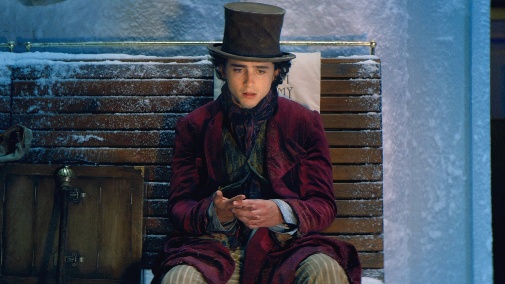 Don't be sad, Mr. WONKA. Better luck next time.
Don't be sad, Mr. WONKA. Better luck next time.
Once upon a time, the Costume Designers Guild differed from the Academy on the regular. It wasn't even that long ago when three of the Oscar nominees got nothing from their guild, including winner Jacqueline Durran for Little Women. However, since that year, every Academy lineup has been entirely made from CDG-honored titles. It's hard to tell if the trend will continue, but, at the very least, one can surmise that the absence of a film indicates a lack of broad industry support. So, it's bad news for Wonka and The Color Purple. In the former's case, it's especially galling when you notice it was beaten by such critically lambasted projects as Disney's Haunted Mansion and the first Rebel Moon movie.
From Barbie pink to Crown gold, let's explore the complete list of nominations…
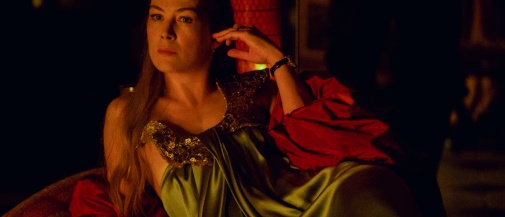
EXCELLENCE IN CONTEMPORARY FILM
- Sophie Canale, SALTBURN
- Kelli Jones, NYAD
- Lisa Lovaas, RENFIELD
- Rudy Mance, AMERICAN FICTION
- April Napier, MAY DECEMBER
Like most Hollywood guilds, the CDG's taste leans mainstream to a detrimental point. If you're not already in the awards conversation in some capacity or considered within the Hollywood circle, it's hard to catch their attention. In other words, as sad as it is, the lack of Passages in this ballot is unsurprising. Renfield, however, makes for a somewhat sweet shock, getting the nod despite no buzz. It must have been Nicholas Hoult's fuzzy sweater that did it. In other news, Saltburn continues to garner guild support, Nyad reemerges from the depths of hopelessness, and American Fiction stakes its claim on the race.
Still, my preferred winner would be April Napier, whose May December designs prolong and complicate the mirror images of actress and subject, leaning into an hyperfeminist that's toxic to the touch.
Regarding galling inclusions, I must proclaim my distaste for Saltburn as a design showcase. Why go to the trouble of setting your story specifically in the mid-00s if next to no visual element follows that mandate? And even if anachronism is the thing, it should be a no-brainer to avoid distracting pieces like recognizable couture from the late 2010s. It just feels sloppy.
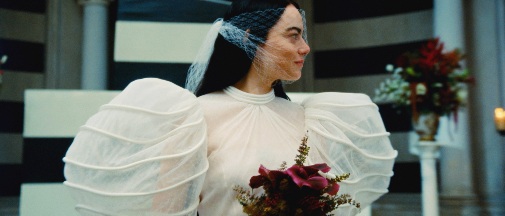
EXCELLENCE IN PERIOD FILM
- Mark Bridges, MAESTRO
- Dave Crossman & Janty Yates, NAPOLEON
- Ellen Mirojnick, OPPENHEIMER
- Holly Waddington, POOR THINGS
- Jacqueline West, KILLERS OF THE FLOWER MOON
This is where CDG's weird categorizations show up. They've always been inconsistent about it. In 2005, a film set in 1989 was period, but in 2009, another late-80s story was deemed contemporary. This year, the conundrum comes in the Frankenstein-esque shape of Poor Things, whose narrative content should push it to the fantasy ballot. However, the costumes are a spin on actual period fashions, moving the novel's 1880s story a decade later to do some zany things with lug-o-mutton sleeves and the like. When exactly does stylization turn into the fantastical? It's especially interesting because that aesthetic is unequally distributed among the characters, with Stone sporting the craziest fits while the remaining actors keep their feet planted in a semblance of reality.
If the vote were up to me, I'd give it to West, whose historical research produced a fascinating wardrobe at the intersection of various cultural facets of early 20th-century America. Moreover, the exactitude doesn't preclude the designs from being character-specific, as with Ernest Burkhart's adoption of Osage textiles into his clothes and Hale's owl-like goggles.
On the other hand, there's no outright disaster to report among the nominated few. For all the issues one might have with Maestro, the costumes are unimpeachable – give or take the Judge Judy comparisons – and the same can be said for Oppenheimer. Napoleon is the only potential sneak, though I was enamored by its depictions of military uniform and revolutionary trends. If only the fur trimmings didn't look so much like IKEA bathmats. In other words, those mourning The Color Purple's snub should direct your hire at Ridley Scott's biopic extravaganza.
But also, Ann Roth was robbed.
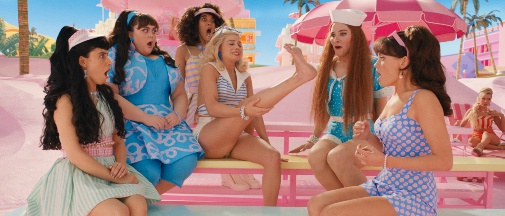
EXCELLENCE IN SCI-FI/FANTASY FILM
- Colleen Atwood & Christine Cantella, THE LITTLE MERMAID
- Jacqueline Durran, BARBIE
- Jeffrey Kurland, HAUNTED MANSION
- Stephanie Porter, REBEL MOON – PART ONE: A CHILD OF FIRE
- Trish Summerville, THE HUNGER GAMES: THE BALLAD OF SONGBIRDS & SNAKES
Again, these categorizations make little sense. While Barbie's narrative is pure fantasy, its costumes follow contemporary fashions or play with reproductions of iconic doll looks from the 20th century. Similarly, while The Little Mermaid is fantastic in nature, its costumes pull from 1830s-40s Caribbean styles, similar to how Poor Things references the late Victorian period. Haunted Mansion is so beholden to Disney-branded spookiness that its historical sources matter very little, leaving a fairytale understanding of the past as basis for its spirits and ghouls. At least the Hunger Games prequel and Rebel Moon's first installment are cut-and-dry sci-fi.
Barbie is the obvious winner, while Wonka is the most surprising absence. The "snub" isn't even comparable to the many times Powell and Durran have missed the guild honors since the CDG has no history of ignoring Wonka's couturier, Lindy Hemming. She's been nominated five times before and won twice, for The Dark Knight and the first Wonder Woman movie. The designer was, however, ignored in 1999, the same season she won the Oscar with Topsy-Turvy.
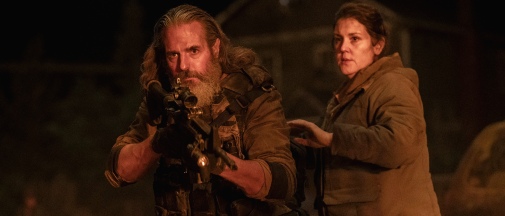
EXCELLENCE IN CONTEMPORARY TELEVISION
- Tayce Gigi Field, POKER FACE "The Orpheus Syndrome"
- Helen Huang, BEEF "The Birds Don't Sing, They Screech in Pain"
- Debra McGuire & Sophie de Rakoff, THE MORNING SHOW "The Kármán Line"
- Cynthia Ann Summers, THE LAST OF US "Endure and Survive"
- Courtney Wheeler, THE BEAR "Fishes"
Putting The Last of Us in contemporary is such an exciting choice. Within its inner logic, the character's clothes are frozen in 2003, which, by this point, should probably count as period costuming. However, the main action happens in 2023, making its setting contemporary. Only the show is classic post-apocalyptic fare, presenting an imagined reality where a mutated fungus has turned most of humanity into zombies. There's no right or wrong way to categorize it, so this choice is as valid as any other. Still, it's hard to imagine it winning unless the program's popularity propels it forward as the frontrunner.
But of course, all these shows have their fans, some more legion-like and passionate than others. Beef and The Bear could pick up an additional trophy to the many they're bound to win at the next Emmys.
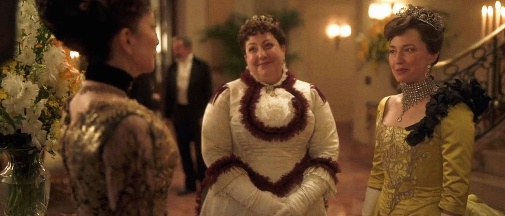
EXCELLENCE IN PERIOD TELEVISION
- Sharon Long, THE GREAT "Choose Your Weapon"
- Kasia Walicka Maimone & Patrick Wiley, THE GILDED AGE "You Don't Even Like Opera"
- Amy Roberts, THE CROWN "Ritz"
- Mitchell Travers, GEORGE & TAMMY "Two Story House"
- Denise Wingate, DAISY JONES & THE SIX "Track 8: Looks Like We Made It"
Like the TV Academy, the CDG isn't against repeat victors. The Crown won for its first two seasons and fifth as well, but one wonders if it can sustain that level of love now that its final hour was met with such derision. More notable is The Marvelous Mrs. Maisel's absence, considering it's won twice before. The other returning champion is The Great, now vying for the win with its third and last season.
The Gilded Age returns after last year's nomination with a season fuller of aesthetic atrocities. Part of me loves how the design team behind the show's wardrobe indulges in the period's eccentricities, reproducing the ugliest fashion plates imaginable so that one can't help but notice that money, old or new, can't buy taste. Then again, do these fashions always need to be so tacky? It's a puzzle maximized to spectacular proportion this season when the opera wars took center stage, and Carrie Coon got to model countless House of Worth homages.
Finally, one must consider the limited series in the group. Historically, regular series and TV movies have had more luck with the CDG. For example, the only other miniseries to get this particular prize were The Queen's Gambit in 2020 and Life with Judy Garland way back in 2001. However, it must be noted that, from 2005 to 2014, both miniseries and TV movies had a category all to themselves. Neither of this year's limited contenders seems popular enough to triumph, but I'll always be rooting for Mitchell Travers – he should already have an Oscar for Hustlers!
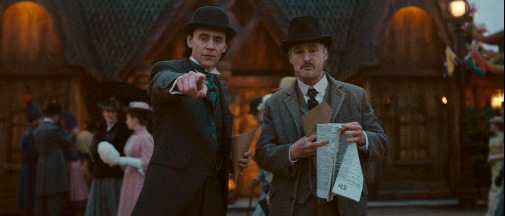
EXCELLENCE IN SCI-FI/FANTASY TELEVISION
- Laura Montgomery, WHAT WE DO IN THE SHADOWS "Pride Parade"
- Shawna Trpcic, ASHOKA "Part Eight: The Jedi, the Witch, and the Warlord"
- Shawna Trpcic, THE MANDALORIAN "Chapter 22: Guns for Hire"
- Christine Wada, LOKI "1893"
- Lucinda Wright, THE WITCHER "The Art of the Illusion"
Why nominate a sci-fi show and purposefully pick an episode characterized by its period costuming? That's the question one may ask themselves when considering Loki's presence here. However, one must note that the CDG didn't always pick individual episodes, so this sort of imbroglio wouldn't have mattered or even happened a couple of years ago. And even despite it all, I'd still vote for the MCU show out of this bunch.
Moving on, Loki, The Mandalorian, What We Do in the Shadows, and The Witcher are all past nominees, though they have yet to win. That said, Trpcic has taken this prize in 2021 for another Star Wars series, The Book of Boba Fett. Back then, she wasn't splitting votes with herself, so it's hard to predict a repeat triumph.
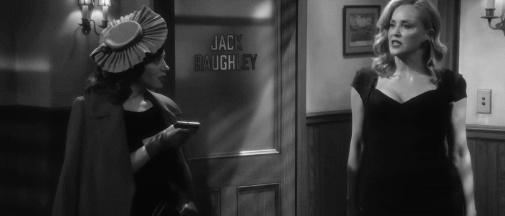
EXCELLENCE IN VARIETY, REALITY COMPETITION, LIVE TELEVISION
- Tom Broecker, Ashley Dudek & Christina Natividad, SATURDAY NIGHT LIVE "Aubrey Plaza Host"
- Tim Chappel, THE MASKED SINGER "80s Night"
- Michelle Page Collins, A BLACK LADY SKETCH SHOW "Peek-A-Boob, Your Titty's Out"
- Daniela Gschwendtner & Steven Norman Lee, DANCING WITH THE STARS "Monster Night"
- Steven Norman Lee & Marina Toybina, THE MASKED SINGER "One Hit Wonders Night"
Including episode credits in the nomination process means the same show can receive multiple nods, as it's happening with The Masked Singer this season. Interestingly enough, A Black Lady Sketch Show is the only first-time nominee. Just for that, I'll be rooting for Michelle Page Collins.
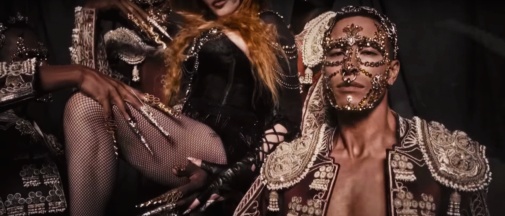
EXCELLENCE IN SHORT-FORM DESIGN
- B. Åkerlund, MADONNA X VANITY FAIR – THE ENLIGHTENMENT (Short Film)
- Heather Allison, PEPSI: GREAT ACTING OR GREAT TASTE (Commercial)
- Paula Bradley, AMERICAN HORROR STORY: DELICATE (Commercial)
- Trayce Gigi Field, DORITOS: JACK'S NEW ANGLE (Commercial)
- Julie Vogel, BLINK 182: DANCE WITH ME (Music Video)
Historically, commercials tend to dominate this category, with the occasional music video succeeding against the odds. That should spell doom for Maddona's Vanity Fair shoot. However, despite the CDG naming it a short film, one can argue it's a music video by another name. Moreover, its visuals are so striking that a win wouldn't be amiss. B. Åkerlund is a CDG mainstay, with this being her sixth nomination. She won previously for a Swarovski commercial, while her other nods came for collaborations with Madonna, Katy Perry, and Beyoncé.
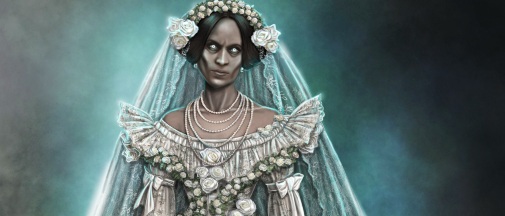
EXCELLENCE IN COSTUME ILLUSTRATION
- Barbra Araujo, HAUNTED MANSION
- Maggie S. Chan, 1923 "War and the Turquoise Tide"
- Oskana Nedavniaya, THE HUNGER GAMES: THE BALLAD OF SONGBIRDS & SNAKES
- Jason Pastrana, REBEL MOON – PART ONE: A CHILD OF FIRE
- Felipe Sanchez, LOKI "1893"
While some costume designers do their own illustrations – Sandy Powell's predilection for watercolor sketches is a good example – some employ illustrators to make their final vision more legible and enticing to producers and remaining crew. As media attention on costuming increases, these illustrations also become another way for a film to promote itself. Hence, the creation of this category. It'd be interesting if other guilds honored artists whose contribution to screen productions gets lost in the behind-the-scenes process.
Critically, this also allows productions to get an additional nomination than they would otherwise. Voters keen on honoring the Hunger Games prequel might be more inclined to pick it here rather than in the category where it's facing off against Barbie. The same goes for the other nominees, 1923 excluded.
What's your favorite nomination from these CDG honors? Alternately, what snub hurt you most?